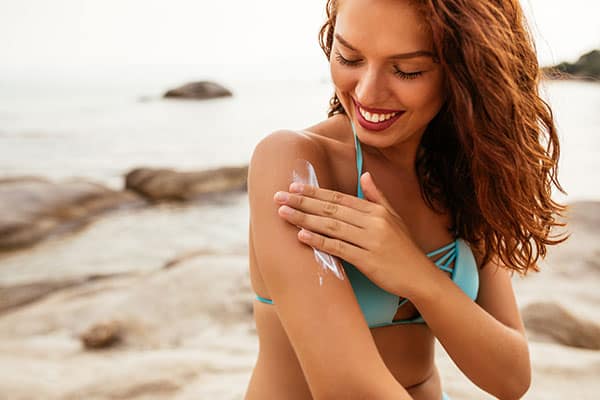
The world of sunscreens has changed quite a bit in the last 30 years. Here are some things Restoration MedSpa recommends you watch out for to prevent premature skin aging:
The Threat of UVA vs. UVB
UV rays come in two different types of Ultraviolet rays that reach the earth surface: UVA and UVB. There are more UVA rays in sunlight than UVB rays.
UVB rays are the ones responsible for typical sunburn on your skin and also play a big role in causing skin cancers including melanoma. UVA rays are now being recognized as primary agents of premature signs of aging and wrinkling of our skin in addition to being linked to malignant melanoma.
The melanoma connection is one reason why sunscreen manufacturers are now allowed to claim UVA protection, a broad-spectrum protection on labels. SPF however, is the only rating for sunscreen, and it only identifies how much UVB is screened, not UVA.
Even though a product can claim UVA protection, we still don’t know how much UVA is absorbed. To be on the safe side, Restoration MedSpa recommends SPFs in the 30 to 50 range. These higher SPF values screen some UVA rays, so the higher the SPF (up to SPF 50) the more likely the product protects from some, though probably not all, UVA.
Additional Sunscreen Won’t Prevent Additional Burning
Skin redness is a warning sign to get out of the sun, not a sign to reapply sunscreen. In addition to reapplying after swimming or sweating, the labels really should read reapply every two hours… unless skin is red. If the skin is red, get outof the sun! The reason is once the skin is already burned, it will continue to burn – even with reapplication of sunscreen – since sunscreens do not completely block the sun, some UV always gets through. Unfortunately the labels don’t tell you this, Restoration MedSpa recommends skin redness checks before reapplication of sunscreen and if redness appears, cover the skin or get out of the sun completely.
There is no Such Thing as Sunblock
Years ago, sunscreen manufacturers used the term Sunblock. Now, we know that some UV rays always get through, so the term sunblock is actually false.
Beyond UV
Although UVA and UVB are the most studied forms of sunlight when it comes to skin, they make up just a percent of the total sunlight reaching earth. Scientists are now looking outside the UV spectrum and have identified infrared as a major player in skin’s aging processes, as well as high energy visible (HEV) light.
HEV is also called near-UVA and is the high frequency blue/violet light located above UVA wavelengths. Not only is it why the sky looks blue, it also can be damaging to our skin. HEV isn’t restricted to sunlight … you can find it in blue light we are exposed to all the time from phones tablets, TVs, flat screens, and fluorescent lights.
Infrared A, also known as “near infrared,” is proving to be the most damaging to skin and early aging. So it’s not just UV we need to protect against.
Sun Protection in other Products
Sometimes you may think you’re protected when you use a cosmetic product with SPF, but you’re not. The amount of sunscreen required by the FDA during testing of those products (like foundation and lipstick) is a much thicker layer than most people apply in reality.
At Restoration MedSpa, we offer many different treatment options to help you rejuvenate and restore your skin damage caused by harmful sun and UV ray exposure. Contact us today to schedule your free consultation.


